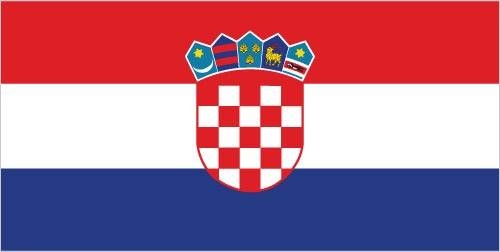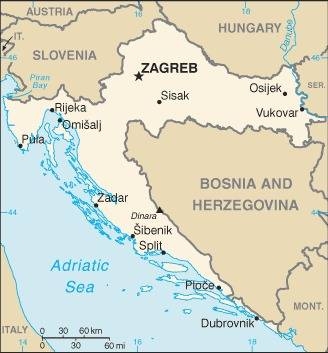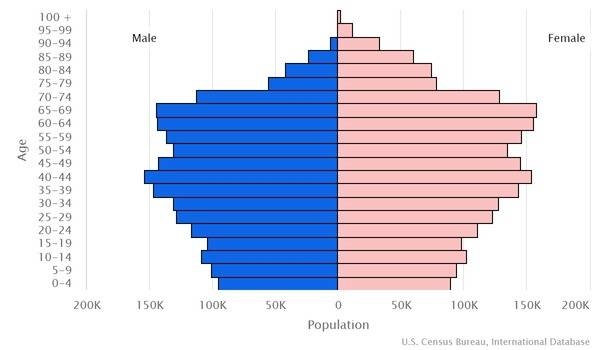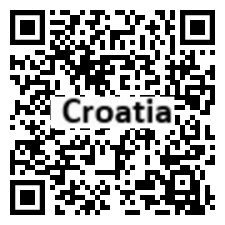Country Summary




Introduction
Background
The lands that today comprise Croatia were part of the Austro-Hungarian Empire until the close of World War I. In 1918, the Croats, Serbs, and Slovenes formed a kingdom known after 1929 as Yugoslavia. Although Croatia declared its independence from Yugoslavia in 1991, it took four years of sporadic, but often bitter, fighting to establish relative stability.
Geography
Area
total: 56,594 sq km
land: 55,974 sq km
water: 620 sq km
Climate
Mediterranean and continental; continental climate predominant with hot summers and cold winters; mild winters, dry summers along coast
Natural resources
oil, some coal, bauxite, low-grade iron ore, calcium, gypsum, natural asphalt, silica, mica, clays, salt, hydropower
People and Society
Population
4,188,853 (2022 est.)
Ethnic groups
Croat 90.4%, Serb 4.4%, other 4.4% (including Bosniak, Hungarian, Slovene, Czech, and Romani), unspecified 0.8% (2011 est.)
Languages
Croatian (official) 95.6%, Serbian 1.2%, other 3% (including Hungarian, Czech, Slovak, and Albanian), unspecified 0.2% (2011 est.)
Religions
Roman Catholic 86.3%, Orthodox 4.4%, Muslim 1.5%, other 1.5%, unspecified 2.5%, not religious or atheist 3.8% (2011 est.)
Population growth rate
-0.47% (2022 est.)
Government
Government type
parliamentary republic
Capital
name: Zagreb
Executive branch
chief of state: President Zoran MILANOVIC (since 18 February 2020)
head of government: Prime Minister Andrej PLENKOVIC (since 19 October 2016); Deputy Prime Ministers Damir KRSTICEVIC (since 19 October 2016), Predrag STROMAR (since 9 June 2017), Marija Pejcinovic BURIC (since 19 June 2017), and Tomislav TOLUSIC (since 25 May 2018)
Legislative branch
description: unicameral Assembly or Hrvatski Sabor (151 seats; 140 members in 10 multi-seat constituencies and 3 members in a single constituency for Croatian diaspora directly elected by proportional representation vote using the D'Hondt method with a 5% threshold; an additional 8 members elected from a nationwide constituency by simple majority by voters belonging to minorities recognized by Croatia; the Serb minority elects 3 Assembly members, the Hungarian and Italian minorities elect 1 each, the Czech and Slovak minorities elect 1 jointly, and all other minorities elect 2; all members serve 4-year terms
Economy
Economic overview
tourism-based economy that was one of the hardest hit by COVID-19 economic disruptions; EU member since 2013, helping recover from a 6-year recession; public debt increases due to COVID-19 and stimulus packages; weak exports; continuing emigration; new liquefied natural gas import terminal
Real GDP (purchasing power parity)
$107.11 billion (2020 est.)
Real GDP per capita
$26,500 (2020 est.)
Agricultural products
maize, wheat, sugar beet, milk, barley, soybeans, potatoes, pork, grapes, sunflower seed
Industries
chemicals and plastics, machine tools, fabricated metal, electronics, pig iron and rolled steel products, aluminum, paper, wood products, construction materials, textiles, shipbuilding, petroleum and petroleum refining, food and beverages, tourism
Exports
$23.66 billion (2020 est.)
Exports - partners
Italy 13%, Germany 13%, Slovenia 10%, Bosnia and Herzegovina 9%, Austria 6%, Serbia 5% (2019)
Exports - commodities
refined petroleum, packaged medicines, cars, medical cultures/vaccines, lumber (2019)
Imports
$27.59 billion (2020 est.)
Imports - partners
Italy 14%, Germany 14%, Slovenia 11%, Hungary 7%, Austria 6% (2019)
Imports - commodities
crude petroleum, cars, refined petroleum, packaged medicines, electricity (2019)
Exchange rates
kuna (HRK) per US dollar -
Page last updated: Wednesday, November 16, 2022
